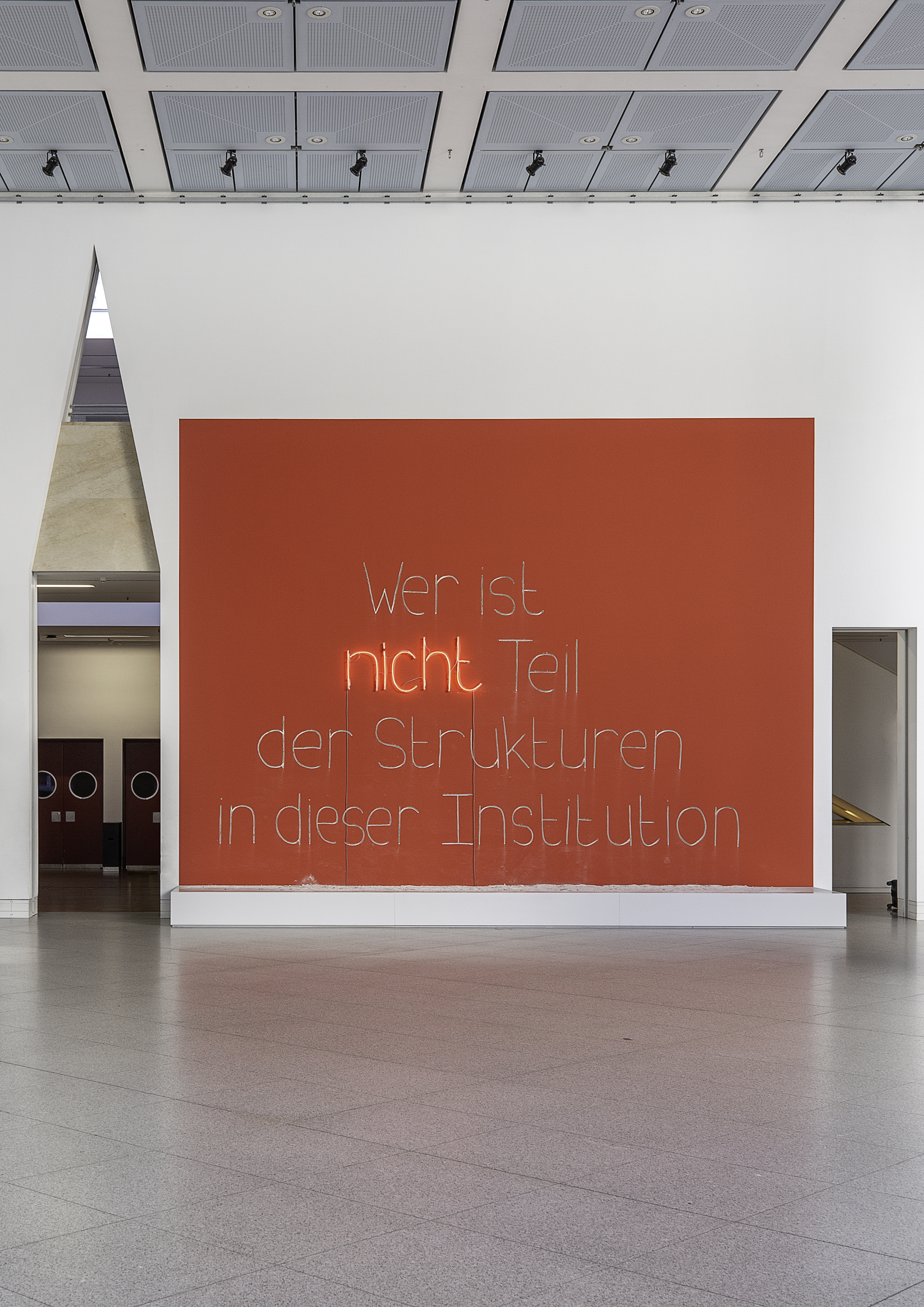
Lerato Shadi

Batho ba ha ba Tlhalonganye
Fine Art Print
Dimensions variable
Display of site-specific installation in: “WHO WE ARE”, Bundeskunsthalle, Bonn (2023)
Batho ba ha ba Tlhalonganye (2019/2023)—Who is (not) part of the structures of this institution?
Who decides in this institution? Who speaks, whose voice is heard, and who is visible? These are important questions in our society and should also be asked in institutions. Usually, decision-making positions are held by people who have no experience with discrimination. Those who belong to a minority that has often been discriminated against have worse chances, for example, in education or in the workplace. People who deviate from the norm of the majority society feel this almost constantly, whether through small gestures or through gross discrimination. The cultural sector is no exception, even if museums see themselves as places of cultural diversity and equality. But are the institutions and their decision-makers doing enough to reflect on their own structures and to be a place for everyone? What support structures do they offer for caregivers in order to allow for their presence in the art field?
Lerato Shadi
Batho ba ha ba Tlhalonganye

Fine Art Print
Dimensions variable
Display of site-specific installation in: “WHO WE ARE”, Bundeskunsthalle, Bonn (2023)
Batho ba ha ba Tlhalonganye (2019/2023)—Who is (not) part of the structures of this institution?
Who decides in this institution? Who speaks, whose voice is heard, and who is visible? These are important questions in our society and should also be asked in institutions. Usually, decision-making positions are held by people who have no experience with discrimination. Those who belong to a minority that has often been discriminated against have worse chances, for example, in education or in the workplace. People who deviate from the norm of the majority society feel this almost constantly, whether through small gestures or through gross discrimination. The cultural sector is no exception, even if museums see themselves as places of cultural diversity and equality. But are the institutions and their decision-makers doing enough to reflect on their own structures and to be a place for everyone? What support structures do they offer for caregivers in order to allow for their presence in the art field?